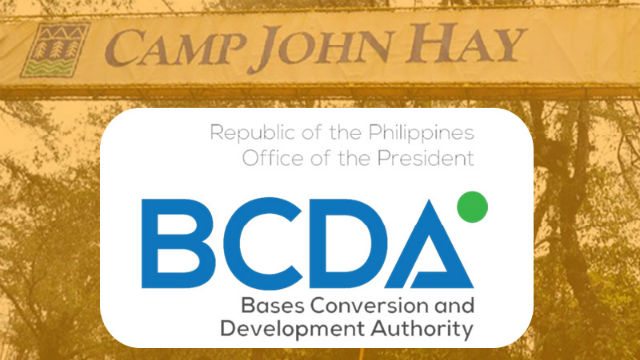Sooner than anyone thinks, it is time to review tourism activities that may have been planned out since way, way back in light of the much talked about rehabilitation program that no less than national officials have been telling us ever since Boracay and the Bay (in Manila) have become bywords.
Surely, given the state of environmental degradation that has marked recent years of relentless, almost non-stop, development, Baguio needs that kind of a shot-in the-arm, something that our environment is in dire need of, something that should hopefully drive home the urgency of getting back our green resource, without having to be bothered by the loss of the green bucks.
Surely, if key tourist destinations nationally have to go through the process, why not Baguio, the country’s very own premier tourist destination, Summer Capital, honeymooners’ paradise, and favorite vacation spot? Surely, there is much to be done, even posthaste, to get Baguio back on track, to reverse the continued slide down wasteland, to reclaim much of the resources that have gone to waste.
Surely, if Baguio goes into rehab mode in say a year or two, beginning on Day One in 2020, shouldn’t we now revisit the hard-core tourism initiatives which have largely dominated much of the tourism efforts in the past decade or two? Initiatives that have hugely depended in luring in tourists during big-ticket events, and oh, how we have bragged about taking in a million or two of tourism arrivals, without realizing that when here in our midst, they’d just about throw into helter-skelter all caution in the wind, and behave like they own the place.
Our recent experience during the last Holiday Season, notably made more exuberant by the Yuletide enchantment that events and activities sought to create, is one such lesson that calls for hard learning, in a manner of thinking. Waste and refuse irresponsibly thrown every which way, traffic jams everywhere — this is the kind of after-effect that festival tourism brings about when the alluring messages get across so effectively that at the slightest hint, with all pretenses cast overboard, the huge crowds simply materialize, brought in by about 70,000 toxic fumigating motorized contraptions that just get jammed every step of the way.
Let’s face it, despite being grim about it. Since irresponsible actuations did take place, the issue of inculcating tourism responsibility seems to be very much in order, direly needed even, as being done in other getaway points not just across the country but even elsewhere. It calls to mind several ways of instilling that kind of behavior until it becomes second skin and grows into a cultural practice.
To be sure, the tourism direction will have to be clearly defined, towards which any promotional effort will require adjustment in messaging, in content, in style, and in the whole branding process. The traditional ways may have to be modified, changed if need be, if we now put a premium on what can be inculcated by way of proper tourist behavior, not just towards each other, not just toward the host people whose vaunted smiles may have somewhat been dulled, but principally towards the very environment that they find endearing.
Make no mistake about it, this is not to deliberate turn away tourists, even if by impulse, observers have been candidly in acceptance of that. If it must be repeated: whether we like it or not, tourists will keep on coming back simply because Baguio will always be Baguio, regardless of time and circumstance. If it must be drilled back into our senses: whether it pleases us no end or not, Baguio is always the Baguio of everyone’s dream, beckoning from afar like a magnetizing charm.
Historically, tourism has long been the bread-and-butter life of Baguio’s economy. As far back as anyone can remember, tourism has been the economic driver that has made possible much of the modernizing advances we’ve been having. Without having to point any blaming finger, it must be admitted that tourism has had its share of flaws, magnified mostly from residents who may have had enough of all the things that they say are tourism-generated.
It is this very way-of-life experience that the tourist planners will have to contend, even to make tough choices made more urgent when Baguio’s rehabilitation process gets underway. This, we all must face head-on as key stakeholders grapple with on-the-ground realities. This, we must meet from a tourism standpoint that veers away from the traditional and now re-directed as part of a bigger role that must be underscored: Responsible Tourism in a Disciplined Place.
But, let us not ignore some economic realities. In recent years, hotel occupancy has been on a downtrend, with hotels and inns barely able to make do in a given year. About the only time that their accommodation and sundry facilities (the restos, the cafes, even the small eateries at the corner) are substantially filled up is when a festival is underway. Like last Christmas, when city-wide jubilation greeted the well-curated programs and events that strived to make the Yuletide experience a bit enchanting than the doldrums of penny-ante celebrations.
But the bonanza merrily ringing out from cash registers has also brought in the brickbats cast in every which way. Can we not enjoy Baguio at its finest even on super events? Yes, the crowds kept on coming up, enticed to take a breather or two on rejuvenating climes that are uniquely Baguio’s. And why shouldn’t they? Land travel has been abbreviated enough for the visitors to be up in the clouds through a relaxing 3-1/2 hour drive along super expressways.
On just about any ordinary day, they still come up, admittedly in reduced numbers, but they still do. Without having to be brash about it, let’s be frank: Baguio, despite the warts and woes of a muddling city life, remains to be a topnotch getaway destination. Our cooling climes, mainly from the only natural air-conditioning system operating nowhere else, are enough to lure them in at the slightest pretense.
Regulating tourism appears to be a sensible reaction, if only to check the congestion it brings into hapless citizens like you and I. But does it really do that? Wouldn’t it in fact kill the goose that lays the golden egg? Having just concluded the Christmas celebration here in Baguio may well offer the insights that can lay the foundation of a midterm and long term tourism plan for an industry crying for attention at this time.
The goal is simple and clear: how do we inculcate a tourism brand like Festival Tourism as a way to bring out the best in what Baguio can offer? Even now, planned events and activities of any festival tourism event, outside of Christmas, Panagbenga, the Summer Vacation, should induce the unique joy of celebrating life the Baguio way, by innovative new events drawn together by a community of people interested to engage and be engaged with each other.
On long-term, there is need to energize the tourism sector in harmony with our natural environment, admitting that the industry can only thrive in an environment whose resources — the mountains, the forest cover, the trees, the water and air bred from these — are well-protected, preserved and nourish enough to secure posterity. And, as prompted by our diminishing forest canopy, regenerated fast!
Perhaps, it is time too to recognize what is happening elsewhere that can be referred to when new tourism directions have to be fleshed out now, not just in sensitive consideration to residents’ sentiments, but precisely to keep us in line with global trends now dictating the tempo, style, and substance of tourism initiatives. Strategies that have long been the established norms in plotting tourism drives just won’t work any longer in keeping with the times. All these have to be made more relevant by pressing environmental needs for protection, conservation, and even regeneration.
In this revisiting mindset, coming up and using some kind of a tourism dispersal strategy may make sense, something that will entice inbound tourists to get out and visit nearby towns, something that will make them feel, up close and personal, the finest Cordillera culture, arts, crafts, and other traditional expressions right where ancestral roots are deeply embedded as cultural spaces still blending and flourishing in our neck of the woods.
Time’s up for the old, decadent ways. Time’s up for new, innovative ways of thinking out-of-box and into the wonderland of tourism made part of what culture can do to a living place called Baguio.













